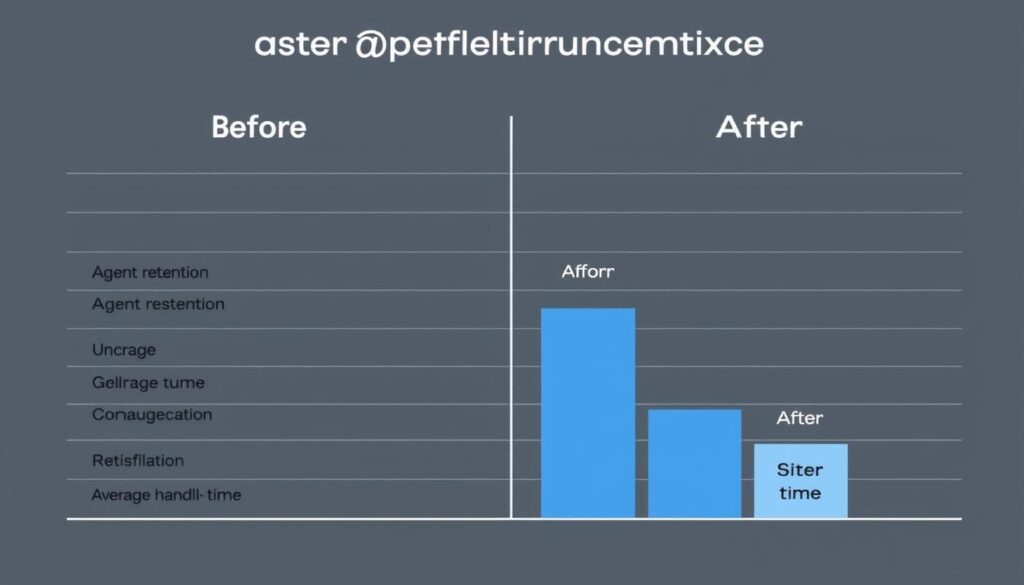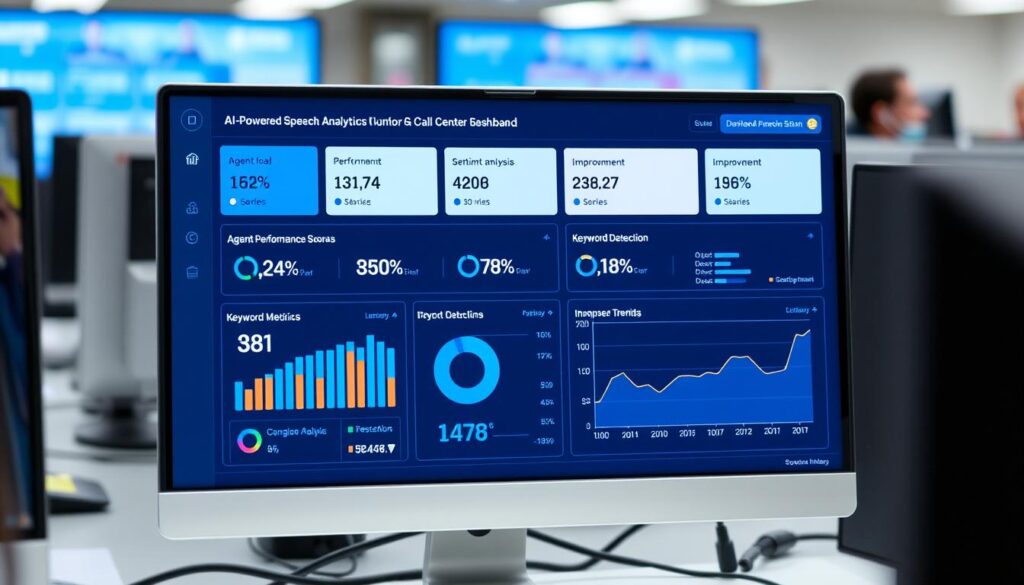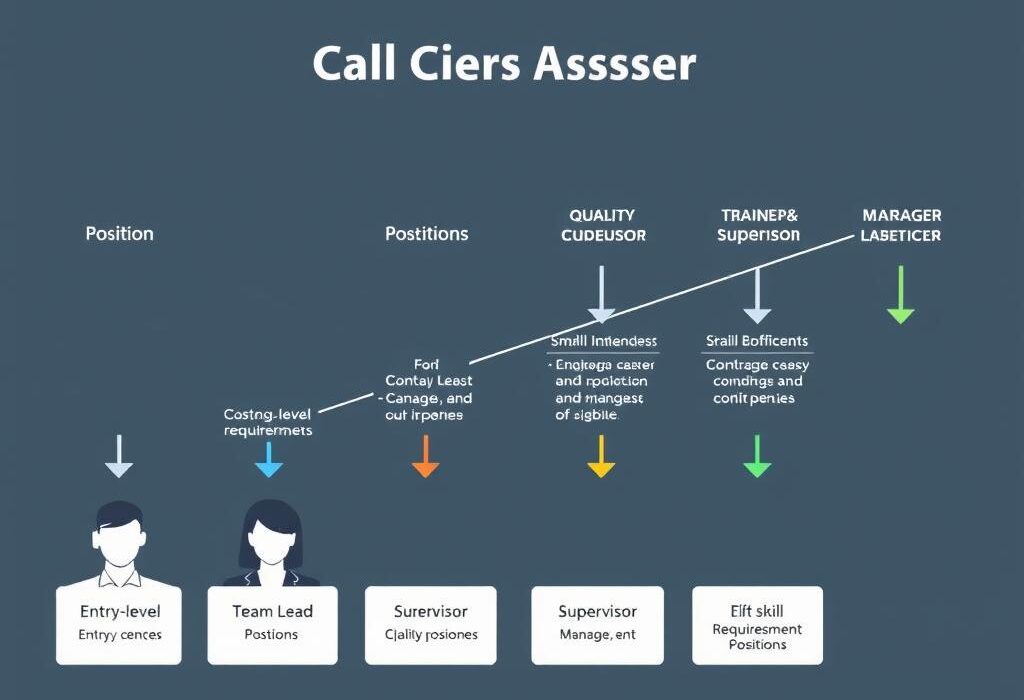Why Call Center Training Techniques Matter More Than Ever
Before diving into specific techniques, let’s address why training deserves your attention. According to industry research, well-trained call center agents are 80% more likely to stay with your company beyond the critical first year. They also resolve customer issues 25% faster and generate 31% higher customer satisfaction scores.
The challenge? Most call centers still rely on outdated training approaches that fail to engage today’s workforce. The traditional “two weeks of classroom training followed by listening to calls” simply doesn’t cut it anymore. Modern agents need dynamic, ongoing development that speaks to their career aspirations and learning preferences.

Effective call center training techniques deliver multiple benefits:
- Reduced agent turnover (saving $10,000+ per replacement hire)
- Improved first-call resolution rates
- Higher customer satisfaction scores
- Decreased average handle time
- Enhanced employee engagement and motivation
- Better quality assurance scores
- Increased sales conversion (for sales-focused centers)
- Greater adaptability to changing customer needs
1. Role-Playing Real Customer Scenarios
Role-playing remains one of the most effective call center training techniques when done correctly. The key is authenticity — using actual customer interactions rather than generic scenarios.
Why It Works
Role-playing creates a safe environment for agents to practice handling difficult situations without the pressure of a live customer. It develops critical thinking skills and builds confidence before agents face similar scenarios in real life.
Implementation Tips
- Use real call recordings (with sensitive information removed) as the basis for role-play scenarios
- Create scenario cards with specific customer personalities and issues
- Rotate roles so agents experience both customer and agent perspectives
- Record role-play sessions for review and feedback
- Gradually increase difficulty as agents build confidence
“When we implemented structured role-playing based on our most challenging customer calls, our quality scores improved by 23% within just two months. Agents reported feeling much more prepared for difficult interactions.”
— James Rodriguez, Call Center Director at ServiceFirst Solutions
2. Gamified Learning Modules
Gamification transforms mundane training into engaging experiences that motivate agents to participate actively. By incorporating game elements like points, badges, leaderboards, and rewards, you tap into agents’ natural competitive spirit and desire for recognition.
Why It Works
Gamified call center training techniques boost knowledge retention by making learning enjoyable. According to a recent study, gamified training programs achieve 83% higher completion rates and 60% better knowledge retention compared to traditional methods.
Implementation Tips
- Create knowledge quizzes with point systems and leaderboards
- Develop achievement badges for mastering specific skills
- Implement team challenges to foster collaboration
- Offer meaningful rewards for top performers (time off, gift cards, etc.)
- Use progress bars to visualize learning advancement
Success Story: TechSupport Inc. implemented a gamified learning platform where agents earned points for completing training modules and demonstrating skills in real calls. Within three months, average handle time decreased by 18%, and customer satisfaction scores rose by 12%.

3. AI-Powered Speech Analytics
Modern call center training techniques increasingly leverage artificial intelligence to provide personalized coaching at scale. AI-powered speech analytics tools analyze customer interactions to identify patterns, sentiment, and areas for improvement.
Why It Works
AI removes subjectivity from performance evaluation and provides data-driven insights that might otherwise be missed. It allows for continuous improvement based on actual customer interactions rather than periodic sampling.
Implementation Tips
- Implement speech analytics software that integrates with your call recording system
- Identify key phrases and behaviors to track (both positive and negative)
- Create personalized coaching plans based on individual agent data
- Share success metrics with agents to demonstrate progress
- Use AI insights to update training materials based on emerging trends
4. Microlearning Sessions
Microlearning breaks training into bite-sized, focused modules that agents can complete in 3-5 minutes between calls or during scheduled breaks. This call center training technique aligns perfectly with how the modern brain learns and retains information.
Why It Works
Microlearning delivers information in digestible chunks that prevent cognitive overload. It fits naturally into the call center environment where agents often have small pockets of availability between calls. Research shows information delivered this way has a 50% higher retention rate than traditional training methods.
Implementation Tips
- Create 3-5 minute video tutorials focused on single concepts
- Develop digital flashcards for product knowledge
- Implement daily skill drills that agents can complete during downtime
- Use mobile-friendly platforms for easy access
- Sequence microlearning modules to build comprehensive knowledge over time
“We replaced our two-week onboarding program with a six-week microlearning approach. New agents started taking calls after just three days, with continued microlearning between calls. Time-to-proficiency dropped by 40%, and our new hires reported much less stress during the learning process.”
— Sarah Chen, Training Manager at Global Response
5. Peer Mentorship Programs
Structured peer mentorship pairs experienced agents with newer team members for ongoing support and development. This call center training technique creates a culture of continuous learning while reducing the burden on formal trainers.
Why It Works
Peer mentorship provides new agents with accessible role models who understand the daily challenges of the job. It creates psychological safety for asking questions and seeking help. For experienced agents, mentoring offers leadership development and recognition of their expertise.

Implementation Tips
- Select mentors carefully based on performance and communication skills
- Provide mentor training to ensure quality guidance
- Schedule regular check-ins between mentors and mentees
- Create mentorship guidelines with clear expectations
- Recognize and reward effective mentors to encourage participation
Benefits
- Reduces new hire anxiety
- Accelerates skill development
- Creates leadership opportunities
- Builds team cohesion
- Costs less than formal training
Challenges
- Requires careful mentor selection
- May perpetuate bad habits if not monitored
- Needs scheduling coordination
- Requires mentor training
- Can create dependency if overdone
6. Emotional Intelligence Workshops
Emotional intelligence (EQ) is arguably the most critical skill for call center agents. Dedicated workshops that develop empathy, self-regulation, and social awareness equip agents to handle emotionally charged customer interactions effectively.
Why It Works
High emotional intelligence enables agents to de-escalate tense situations, build rapport with customers, and maintain their own wellbeing. Research shows agents with strong EQ skills achieve 27% higher customer satisfaction scores and experience 31% less burnout.
Implementation Tips
- Conduct EQ assessments to establish baselines
- Develop workshops focused on the five components of emotional intelligence
- Practice active listening exercises with feedback
- Teach de-escalation techniques for handling upset customers
- Include self-care strategies to prevent emotional exhaustion
| EQ Component | Training Activity | Business Impact |
| Self-awareness | Emotion logging exercises | Reduced agent stress levels |
| Self-regulation | Breathing techniques | Fewer escalated calls |
| Motivation | Personal goal setting | Higher productivity |
| Empathy | Perspective-taking exercises | Improved CSAT scores |
| Social skills | Communication role-plays | Better team collaboration |
7. Personalized Feedback Loops
Generic feedback rarely drives meaningful improvement. Personalized feedback loops create structured processes for delivering specific, actionable guidance tailored to each agent’s strengths and development areas.
Why It Works
Personalized feedback acknowledges agents as individuals with unique needs and learning styles. It creates clear connections between specific behaviors and outcomes, making improvement paths obvious and achievable.
Implementation Tips
- Implement regular 1:1 coaching sessions with consistent structure
- Use call recording analysis to provide specific examples
- Create individual development plans with measurable goals
- Incorporate agent self-assessment to build ownership
- Follow up on previous feedback to create accountability
Effective Feedback Formula: Observation + Impact + Question + Suggestion
“I noticed that you interrupted the customer twice during the troubleshooting process (observation). This seemed to frustrate them and extended the call time (impact). What was your thought process in that moment? (question) Consider using phrases like ‘Let me make sure I understand completely’ before redirecting the conversation (suggestion).”
8. Stress Management Training
Call center work is inherently stressful. Equipping agents with effective stress management techniques not only improves their wellbeing but also enhances their ability to handle difficult customer interactions with composure.
Why It Works
Stress management training acknowledges the emotional labor of call center work and provides practical tools for maintaining resilience. Agents who can effectively manage stress deliver more consistent customer experiences and experience less burnout.

Implementation Tips
- Teach quick stress-reduction techniques that can be used between calls
- Implement “emotional first aid” protocols for after difficult calls
- Create physical spaces for brief decompression
- Train supervisors to recognize stress signals in their teams
- Incorporate wellness activities into team meetings
Physical Techniques
- Deep breathing exercises
- Progressive muscle relaxation
- Desk stretches
- Proper ergonomics
Cognitive Techniques
- Thought reframing
- Positive self-talk
- Mindfulness practices
- Visualization
Organizational Support
- Clear escalation paths
- Reasonable break schedules
- Supportive team culture
- Recognition programs
9. Product Knowledge “Libraries”
Comprehensive product knowledge is fundamental to agent confidence and customer satisfaction. Creating accessible, searchable knowledge libraries transforms how agents access and retain critical information.
Why It Works
Knowledge libraries eliminate the frustration of searching for information across multiple systems. They empower agents to find answers quickly, reducing handle time and improving accuracy. Well-designed libraries also reduce the cognitive load of memorizing complex product details.
Implementation Tips
- Create searchable digital repositories with intuitive organization
- Include visual aids like product images and diagrams
- Develop quick-reference guides for common questions
- Implement knowledge checks to ensure familiarity with resources
- Establish update protocols to maintain accuracy
“After implementing our searchable knowledge library with visual guides, our average handle time decreased by 42 seconds per call. More importantly, our first-call resolution rate improved from 67% to 81% within three months.”
— Carlos Mendez, Operations Director at CustomerFirst Solutions
10. Career Path Mapping
One of the most overlooked call center training techniques is clear career path mapping. Showing agents how their current role connects to future opportunities dramatically improves retention and motivation.
Why It Works
Career path mapping transforms what might be seen as a “job” into a meaningful career step. It provides purpose and direction, motivating agents to invest in skill development. For call centers, it creates a pipeline of internal talent for leadership positions.

Implementation Tips
- Create visual career path maps showing possible progression routes
- Define skill requirements for each career level
- Implement development planning in regular performance discussions
- Offer skill-building opportunities aligned with career goals
- Showcase internal promotion success stories to demonstrate possibilities
Common Mistake: Many call centers focus exclusively on performance metrics without connecting them to career advancement. This creates a perception that improvement efforts won’t lead to meaningful opportunities, reducing motivation to engage with training.
Implementing These Call Center Training Techniques: A Roadmap
Transforming your call center training approach doesn’t happen overnight. Here’s a practical roadmap for implementing these techniques in a sustainable way:
Phase 1: Foundation (1-30 Days)
- Assess current training effectiveness
- Identify highest-priority techniques
- Secure leadership buy-in
- Develop implementation timeline
- Create success metrics
Phase 2: Implementation (31-90 Days)
- Pilot techniques with select teams
- Gather feedback and refine approach
- Train supervisors on coaching methods
- Develop supporting materials
- Establish feedback mechanisms
Phase 3: Optimization (91+ Days)
- Scale successful techniques center-wide
- Measure impact on key metrics
- Refine based on results
- Integrate into ongoing operations
- Celebrate and recognize success
Key Success Factors
Based on our work with hundreds of call centers, we’ve identified these critical success factors for training transformation:
- Executive sponsorship that provides visible support and necessary resources
- Agent involvement in the design and refinement of training approaches
- Supervisor enablement to support new training techniques through coaching
- Technology alignment to ensure systems support training objectives
- Continuous measurement with regular review and adjustment
Case Study: How One Call Center Transformed Their Training Approach

NorthStar Customer Support: 250-Agent Financial Services Center
NorthStar was struggling with 72% annual turnover and declining customer satisfaction scores. Their traditional two-week classroom training followed by “nesting” wasn’t preparing agents for the complexity of financial support calls.
The Transformation
NorthStar implemented five of the call center training techniques outlined above:
- Microlearning modules for product knowledge
- Peer mentorship program
- Gamified learning competitions
- Emotional intelligence workshops
- Career path mapping
The Results (After 6 Months)
- Agent turnover reduced from 72% to 41% annually
- Customer satisfaction increased by 17 points
- Average handle time decreased by 48 seconds
- First-call resolution improved from 62% to 78%
- Internal promotion rate doubled

Frequently Asked Questions About Call Center Training Techniques
How long should call center training last?
The most effective approach is to view training as continuous rather than a one-time event. Initial onboarding might last 2-4 weeks, but ongoing development should continue throughout an agent’s tenure. The techniques described in this article work best when implemented as part of a continuous learning culture rather than isolated training events.
What’s the ROI of improved call center training?
Call centers typically see ROI in three areas: reduced turnover costs (average ,000-15,000 per replacement), improved productivity (10-30% increase in calls handled), and higher customer satisfaction (leading to better retention). For a 100-agent center, implementing these techniques often yields 0,000+ in annual savings and revenue improvements.
How do you train remote call center agents effectively?
Remote training requires additional structure and engagement strategies. Focus on creating interactive virtual sessions rather than passive webinars. Leverage video for demonstrations, implement digital collaboration tools, establish clear communication channels, and create virtual social connections through team activities. Many of the techniques in this article can be adapted for remote settings with the right technology support.
What’s the biggest mistake call centers make with training?
The most common mistake is treating training as a one-time event rather than an ongoing process. Many centers invest heavily in initial onboarding but provide minimal continuous development. This creates a situation where agents gradually develop bad habits and become disengaged. The second biggest mistake is failing to connect training to meaningful career progression, which undermines motivation to improve.
Conclusion: The Future of Call Center Training
The call center industry continues to evolve rapidly, with customer expectations rising and technology transforming how support is delivered. In this environment, effective call center training techniques aren’t just nice-to-have—they’re essential for survival and success.
The ten techniques we’ve explored represent best practices drawn from hundreds of successful call centers. They address the fundamental challenges of the industry: high turnover, agent engagement, knowledge retention, and consistent performance.
Remember that implementation doesn’t have to be all-or-nothing. Start with the techniques that address your most pressing challenges, measure results, and expand from there. The most successful call centers view training as a continuous journey of improvement rather than a destination.
What call center training techniques have worked best for your team? We’d love to hear your experiences in the comments below.
Get Your Free Call Center Training Checklist
Download our comprehensive checklist to implement these techniques in your call center immediately. Track your progress and see results in as little as 30 days.

Calculate Your Training ROI
Use our interactive calculator to see how improved training techniques could impact your call center’s bottom line.

Emotional Intelligence Assessment Tool
Evaluate your team’s emotional intelligence and identify development opportunities with our free assessment tool.

Transform Your Call Center Training Today
Download our comprehensive Call Center Training Techniques Checklist and start implementing these proven strategies in your center immediately.


